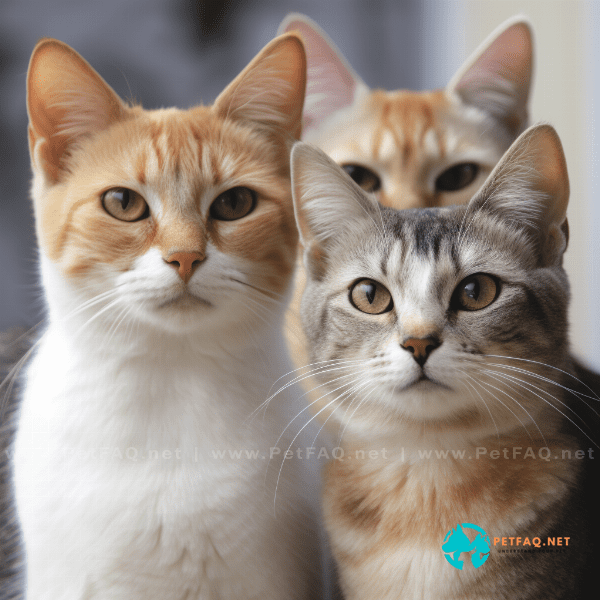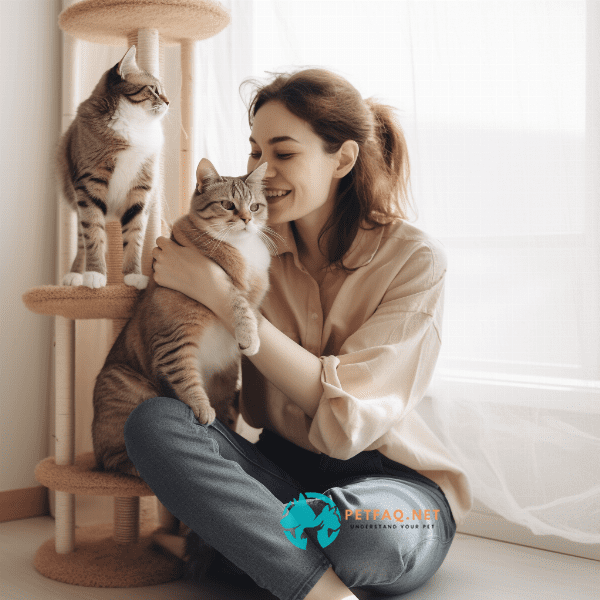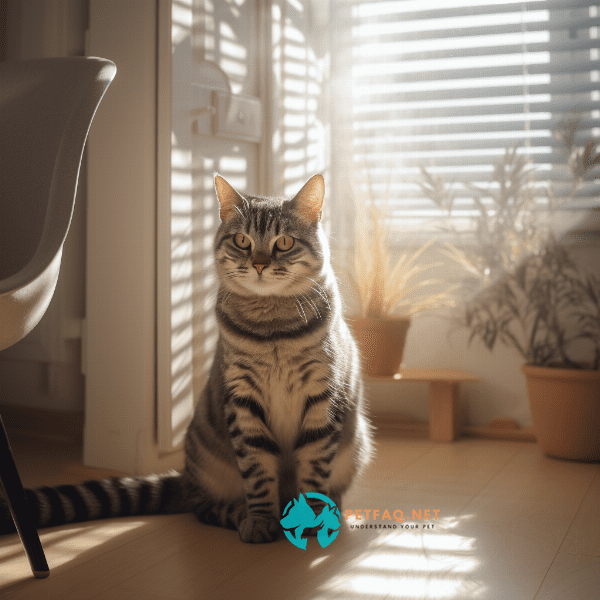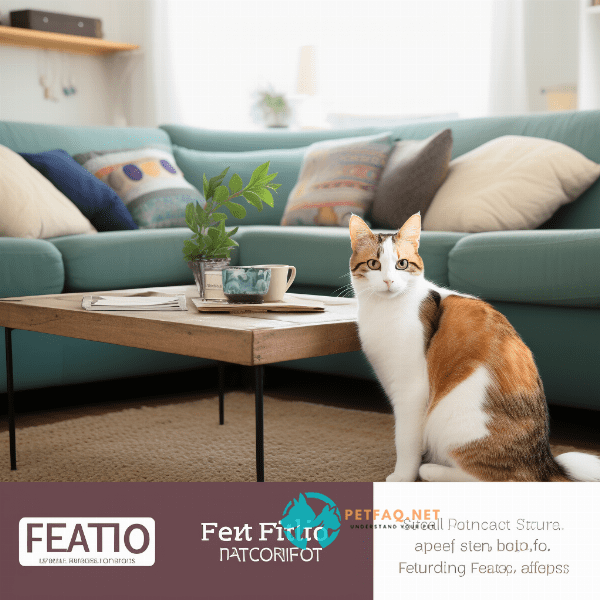Table of Contents
- Understanding the Five Major Personality Traits in Cats: Exploring the Different Types of Feline Personalities
- Decoding Your Cat’s Body Language: A Guide to Understanding Your Cat’s Emotions and Behaviors
- How to Help Your Shy or Aggressive Cat: Tips for Improving Your Cat’s Behavior and Building Trust
- From Scratchers to Cuddlers: How to Manage Your Cat’s Behavioral Issues and Strengthen Your Bond
- The Impact of Environment on Cat Behavior: How Your Home and Routine Affect Your Cat’s Mood and Personality
Understanding the Five Major Personality Traits in Cats: Exploring the Different Types of Feline Personalities
Cats are known for their unique personalities, which can vary widely from one feline to another. While every cat is different, experts have identified five major personality traits that are commonly found in cats. Understanding these traits can help cat owners better understand their furry companions and build stronger relationships with them.
The five major Personality Traits in Cats are openness, conscientiousness, extraversion, agreeableness, and neuroticism. Openness refers to a cat’s willingness to explore and try new things, while conscientiousness is linked to a cat’s level of discipline and organization. Extraversion reflects a cat’s sociability and desire for attention, while agreeableness is related to a cat’s level of friendliness and affection. Finally, neuroticism refers to a cat’s emotional stability and resilience in the face of stress.
By recognizing which traits their cat displays, owners can better understand their cat’s preferences, behaviors, and needs. This knowledge can help owners provide their cats with the appropriate care and attention, leading to happier and healthier feline companions.

Decoding Your Cat’s Body Language: A Guide to Understanding Your Cat’s Emotions and Behaviors
Cats communicate in a variety of ways, and one of the most important is through their body language. By understanding your cat’s body language, you can learn to decipher their emotions and behaviors and better respond to their needs. Here are some common signals to look out for:
* Ears: A relaxed cat will have their ears pointing forward, while flattened ears indicate fear or aggression.
* Eyes: Dilated pupils suggest excitement or fear, while half-closed eyes indicate contentment.
* Tail: A twitching tail can indicate agitation, while a slowly moving tail suggests a calm and content cat.
* Posture: An arched back can indicate fear or aggression, while a relaxed and stretched out body suggests a happy and content cat.
* Vocalizations: Different meows, purrs, and growls can indicate different emotions, such as hunger, excitement, or fear.
By paying attention to your cat’s body language, you can learn to anticipate their needs and respond appropriately. This can lead to a stronger bond between you and your feline friend, as well as a happier and healthier cat.

How to Help Your Shy or Aggressive Cat: Tips for Improving Your Cat’s Behavior and Building Trust
Some cats can be shy or aggressive, which can make it challenging for their owners to build trust and create a positive relationship. However, with patience and persistence, it is possible to improve your cat’s behavior and help them become more comfortable and relaxed around you.
One of the most important things you can do is to provide a safe and comfortable environment for your cat. This can include creating a cozy sleeping area, providing plenty of hiding places, and avoiding loud noises or sudden movements. You can also try using positive reinforcement, such as treats or toys, to reward your cat for good behavior and encourage them to interact with you.
If your cat is particularly shy or fearful, you can try using calming pheromone sprays or diffusers to create a sense of calm in your home. Additionally, giving your cat plenty of time and space to adjust to new people or situations can help them feel more at ease.
If your cat is aggressive, it’s important to identify the cause of their behavior and address it appropriately. This may involve consulting with a veterinarian or a professional animal behaviorist to develop a plan for managing your cat’s aggression.
With time and patience, you can help your shy or aggressive cat become more comfortable and relaxed around you. By building trust and creating a positive relationship, you can strengthen the bond between you and your feline friend and provide them with a happy and healthy home.

From Scratchers to Cuddlers: How to Manage Your Cat’s Behavioral Issues and Strengthen Your Bond
Cats have unique personalities, and with that can come a range of behavioral issues. From scratching furniture to avoiding cuddles, it can be frustrating for cat owners to deal with these behaviors. However, with some patience and understanding, it is possible to manage your cat’s behavioral issues and strengthen your bond with them.
Scratching is a common behavior among cats, and can cause damage to furniture and other items in your home. To prevent this, it’s important to provide your cat with appropriate scratching posts and toys. You can also try using deterrents, such as double-sided tape or citrus scents, to discourage your cat from scratching furniture.
On the other hand, some cats may be reluctant to cuddle or show affection. To encourage more bonding, try spending more time with your cat and engaging in playtime or other activities they enjoy. Additionally, offering treats and positive reinforcement when your cat displays affectionate behavior can help encourage more cuddling.
If your cat’s behavioral issues persist or become more serious, it’s important to consult with a veterinarian or a professional animal behaviorist for further guidance.
By taking a proactive approach to managing your cat’s behavioral issues, you can create a happier and more fulfilling relationship with your feline friend.

The Impact of Environment on Cat Behavior: How Your Home and Routine Affect Your Cat’s Mood and Personality
Cats are highly influenced by their environment, and the way you set up your home and routine can have a significant impact on their behavior, mood, and personality. Here are some factors to consider:
* Space: Cats need plenty of room to move around and explore, so it’s important to provide them with enough space to roam and play.
* Routine: Cats thrive on routine, and a consistent schedule can help them feel secure and comfortable. Try to feed your cat at the same time each day and set up a regular playtime or cuddling session.
* Enrichment: Cats need mental stimulation, and providing them with toys, puzzles, and other forms of enrichment can help keep them happy and engaged.
* Socialization: While cats are independent creatures, they still need socialization and interaction with their owners. Make sure to spend time playing, cuddling, and interacting with your cat every day.
* Comfort: Finally, it’s important to create a comfortable and cozy environment for your cat, with soft bedding, warm blankets, and plenty of hiding places.
By taking the time to set up a comfortable and stimulating environment for your cat, you can help improve their behavior, mood, and overall well-being. With patience and understanding, you can create a happy and harmonious home for you and your feline friend.

Frequently Asked Questions (FAQs) about Cat Behavior personality:
1. What are some common signs of stress or anxiety in cats and how can they be alleviated?2. Can a cat's behavior be influenced by its environment?
3. What factors influence a cat's behavior?
4. What kind of personality should I look for in a cat?
5. How do cats communicate with each other, and how does this affect their behavior?
6. What is the personality of a Ragdoll cat like?
7. What are the personality traits of American Shorthair cats?
8. What is the personality of American Shorthair cats like?
9. What is the personality and temperament of an Abyssinian cat like?
10. How does the American Shorthair's personality and behavior compare to other breeds?

